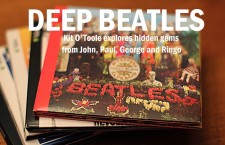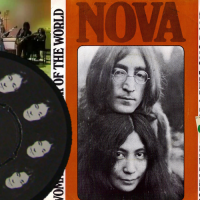There have long been theories on what it meant, and whether it was constructed in such a way as to convey a larger narrative. In the end, however, “Revolution 9” remains as big a mystery today as it was the moment it appeared on the Beatles’ 1968 self-titled album. The eight-minute Stockhausen-esque sound collage, released as that project’s penultimate track, was constructed using tape loops, samples and live vocals beginning on May 30, 1968 and continuing through June 21. John Lennon and Yoko Ono were the principal architects, with additional sounds from George Harrison and George Martin.
As brash and off-putting as it can sometimes be, the song is really the complete realization of a series of Lennon’s tape-loop experiments that began on several earlier songs — including “Tomorrow Never Knows,” from 1966’s Revolver and (more famously) in the outros for “Strawberry Fields Forever” and “I Am The Walrus.” Yet Lennon never gave any complete explanation for orchestrating this extended noise-based composition. That, coupled with the fact that it grew out of an extended coda for the song “Revolution,” had some thinking it represented some sort of post-apocalyptic storyline — including, sadly, the murderous Charles Manson.
Ono, in a new fan Q&A, puts to rest that idea by framing the song’s creation in far simpler terms: “It was like cooking up a great meal,” she says. “We just did it.”
Whatever its genesis, Lennon wasn’t close to finished with this musique concrète style, continuing to fiddle with it for years over a trio of subsequent ambient-sound duo recordings with Ono. (The most famous moment, perhaps, from the period was when they called back and forth over a range of emotions — and their own pulses — during the entirety of Side 1 of 1969’s The Wedding Album.) This overtly experimental period, in fact, lasted until 1972 when Lennon staged, along with Ono, a series of outsider art exhibits, books, recordings and stunts.
Still, Lennon never had a more complete realization of these concepts, and certainly never had one that ended up in more people’s every-day lives. Each sound on the convoluted, but fascinating “Revolution 9” appears to represent an instrument or group of instruments. The rising emotions have a power that suggests the dying of a life, or the end of time. Throughout, a recurring theme is found in the words “number nine,” and no small amount of mythology has built up around it, even if the bulk of the Beatles’ core fanbase never really understood Lennon’s vision here.
They should have. It was seen back then as off-puttingly avant-garde, and maybe is now, too. Still, it’s easy to connect this tune — messy, unformed, completely stream of consciousness — with the first flowerings of punk. In that way, even though it’s not necessarily listenable in the context of the Beatles’ renowned pop perfection, “Revolution 9” remains a powerful argument for Lennon’s frisky genius.




